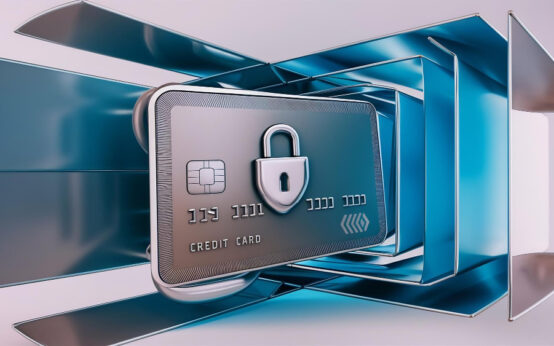Choosing the right credit card can be overwhelming with so many options available. In this post, we will explore different types of credit cards, their interest rates, fees, rewards, and benefits, as well as tips for responsible use. Understanding these factors can help you make an informed decision.
Types of Credit Cards
Types of Credit Cards
When it comes to choosing a credit card, understanding the different types available is crucial. Here’s a breakdown to help you make an informed decision:
- Standard Credit Cards: These are basic cards with no special features or rewards. They are ideal for straightforward purchases and building credit.
- Rewards Credit Cards: These cards offer points, cash back, or other incentives for every dollar spent. Categories often include travel, dining, and groceries.
- Secured Credit Cards: Great for those with limited or poor credit history, these cards require a refundable security deposit that serves as your credit limit.
- Charge Cards: Unlike traditional credit cards, charge cards must be paid off in full each month. They often come with high spending limits and rewards.
- Business Credit Cards: Designed for business expenses, these cards offer features like expense management tools and higher credit limits, often with rewards tailored to businesses.
- Student Credit Cards: Tailored for college students, these cards typically have lower credit limits and may offer rewards for good grades and responsible use.
- Balance Transfer Cards: Ideal for consolidating debt, these cards offer low or 0% introductory interest rates on balance transfers for a specified period.
- Travel Credit Cards: Perfect for frequent travelers, these cards offer travel-specific rewards like airline miles, hotel points, and travel protections.
- Store Credit Cards: Issued by specific retailers, these cards provide discounts and rewards for purchases made at that store or within a network of related stores.
Interest Rates and Fees

When comparing credit cards, it’s important to understand the interest rates and fees associated with each card. Interest rates can dramatically impact how much you pay over time if you carry a balance. Look for cards with a low APR (Annual Percentage Rate) to minimize the cost of borrowing. Also, consider if the card has an introductory APR offer that might allow you to pay no interest on purchases or balance transfers for a limited time.
Fees are another crucial aspect to evaluate. Some common fees include annual fees, late payment fees, balance transfer fees, and foreign transaction fees. Always read the terms and conditions to understand all potential charges. If you frequently travel abroad, look for cards with no foreign transaction fees to save money on international purchases.
Be cautious of hidden fees that could increase the overall cost of using the credit card. By carefully reviewing the interest rates and fees, you can choose a card that aligns with your financial goals and minimizes extra expenses.
Rewards and Benefits
When comparing credit cards, it’s important to consider the rewards and benefits each card offers. Different cards provide various types of rewards, such as cashback, travel points, or store discounts.
Look for credit cards that offer rewards that align with your spending habits. For example, if you travel frequently, a card with travel points might be beneficial. On the other hand, if you prefer savings on everyday purchases, a cashback card could be the best choice.
Besides rewards, consider any additional benefits the card may offer. These could include free checked bags on flights, extended warranties on purchases, or exclusive access to events. Some cards offer introductory bonuses like a large number of points or cash back if a certain amount is spent within a specified period.
Always read the fine print to understand the requirements for earning rewards and any limitations. Some cards may offer higher reward rates in specific categories but lower rates for other purchases. Also, check if there are caps on the amount of rewards you can earn.
Reviewing the rewards and benefits offered by various cards can help you find the one that provides the most value for your lifestyle.
How to Apply for a Credit Card

Research and Compare: Start by researching and comparing different credit card options. Look at various factors such as interest rates, fees, rewards, and benefits to determine which card fits your needs. Utilize online comparison tools to make your search easier and more comprehensive.
Check Your Credit Score: Your credit score plays a crucial role in the approval process. Make sure to check your credit score before applying. This will help you understand which cards you are likely to qualify for.
Gather Necessary Documentation: Prepare the required documents, such as your identification, proof of income, and other personal information. Having these documents ready can streamline the application process.
Fill Out the Application: Once you’ve chosen a card, proceed with filling out the application form. Provide accurate and complete information to avoid any delays or issues.
Review and Submit: Before hitting submit, review all the information you’ve entered to ensure its accuracy. Once you are confident everything is correct, submit your application.
Await Approval: After submitting your application, you will need to wait for a response from the credit card company. This may take a few days to a few weeks, depending on the issuer.
Tips for Responsible Credit Card Use
Using credit cards responsibly can greatly benefit your financial health and credit score. Here are some key tips to keep in mind:
1. Pay Your Balance in Full Every Month
Always strive to pay your complete balance each month to avoid interest charges. This practice helps in maintaining a good credit score and keeps you from accumulating debt.
2. Monitor Your Spending
Regularly check your account statements to track your purchases. This helps you stay within your budget and quickly spot any unauthorized transactions.
3. Keep Your Credit Utilization Low
A good rule of thumb is to use no more than 30% of your available credit. High credit utilization can negatively impact your credit score.
4. Set Up Automatic Payments
Setting up automatic payments ensures you never miss a due date, which can result in late fees and a lower credit score.
5. Understand Your Credit Card Terms
Read the fine print to understand interest rates, fees, and rewards programs. Knowledge of these terms helps you to maximize benefits and avoid unnecessary costs.
6. Use Credit Cards for Needs, Not Wants
Charge only what you can afford to pay off each month. Avoid using credit cards for impulse purchases.
7. Review Your Credit Report Regularly
Check your credit report annually to ensure it’s accurate. Dispute any errors you find to keep your credit score in good shape.



 Best credit cards secured: your path to a stronger credit history <p style='text-transform:none; line-height:20px !important; font-size:16px; font-weight:normal; color:#424242; margin: 0px; margin-top:10px;'>They offer a smart way to show lenders you’re serious about managing your finances.</p>
Best credit cards secured: your path to a stronger credit history <p style='text-transform:none; line-height:20px !important; font-size:16px; font-weight:normal; color:#424242; margin: 0px; margin-top:10px;'>They offer a smart way to show lenders you’re serious about managing your finances.</p>  The best credit cards for lounge access: your key to premium airport comfort <p style='text-transform:none; line-height:20px !important; font-size:16px; font-weight:normal; color:#424242; margin: 0px; margin-top:10px;'>With these cards, you have exclusive access to lounges, offering comfort while you wait for your flight.</p>
The best credit cards for lounge access: your key to premium airport comfort <p style='text-transform:none; line-height:20px !important; font-size:16px; font-weight:normal; color:#424242; margin: 0px; margin-top:10px;'>With these cards, you have exclusive access to lounges, offering comfort while you wait for your flight.</p>  Safe, simple, and fun: discover the best debit cards for kids <p style='text-transform:none; line-height:20px !important; font-size:16px; font-weight:normal; color:#424242; margin: 0px; margin-top:10px;'>These cards offer the flexibility and convenience that both parents and kids need.</p>
Safe, simple, and fun: discover the best debit cards for kids <p style='text-transform:none; line-height:20px !important; font-size:16px; font-weight:normal; color:#424242; margin: 0px; margin-top:10px;'>These cards offer the flexibility and convenience that both parents and kids need.</p>